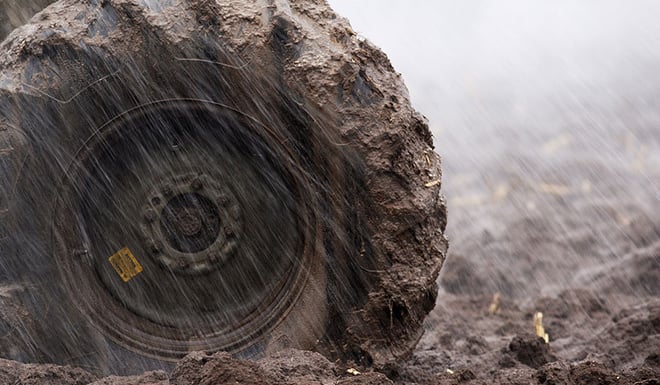Efficient management of your tyres allows you to protect your profitability and take better care of your soil. Agricultural tyre rolling resistance is often underestimated, although it plays an important role in your tractor’s overall performance. This resistance is influenced by many factors such as tyre pressure, tyre size, the type of soil and its moisture content. It has a direct impact on tread wear, slip ratio, time spent in the fields and above all on fuel consumption. A good understanding of what causes this resistance not only improves the efficiency of your tractor but also contributes towards more sustainable farming practices.
In this article we look into practical strategies for managing rolling resistance more efficiently. By aiming to ensure your tyres are better suited to your working conditions and optimising their use, we can offer practical solutions to reduce wear and fuel consumption. These measures make it possible to limit the impact to the ground and improve the profitability of your farm activities:
1. How does agricultural tyre rolling resistance impact vehicles that travel long distances (50 km/day or more)?
Rolling resistance in agricultural tyres is a key factor to take into account for those who travel 50 km or more by day on the road. This resistance, linked to the load and friction between materials, acts as a force that counters the tractor’s movement. It can have a significant impact on several aspects of agricultural tyres.
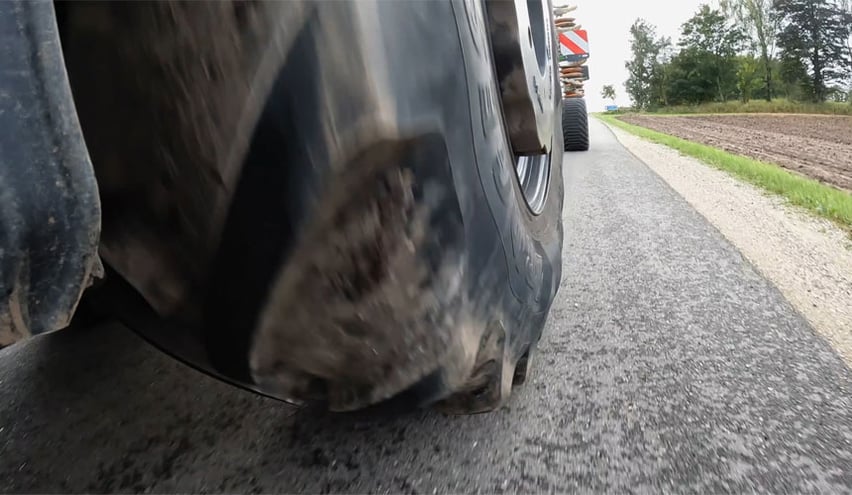
What are the problems linked to rolling resistance in agricultural tyres?
Incorrect tyre pressure is one of the main causes of rolling resistance. Too low an inflation pressure on the road can cause premature tyre wear, excessive fuel consumption, increased noise levels and loss of driving comfort.
In addition to pressure, the geometry of the front axle of the tractor must also be closely monitored. A problem with parallelism or camber can increase rolling resistance by preventing the correct synchronisation of the front and rear axles. Signs of irregular wear may appear if the geometry is not right, which rapidly reduces your tyres’ lifespan for those who travel frequently by road.
In certain cases, rolling resistance is due to a poor quality connection between the tractor and the drawn implement, or a misalignment of the combination vehicle. This can cause the tractor to veer off course, obliging the driver to correct the steering continually. Over time, the tyres will incur uneven wear, which is very rapid in the case of intensive use on the road.
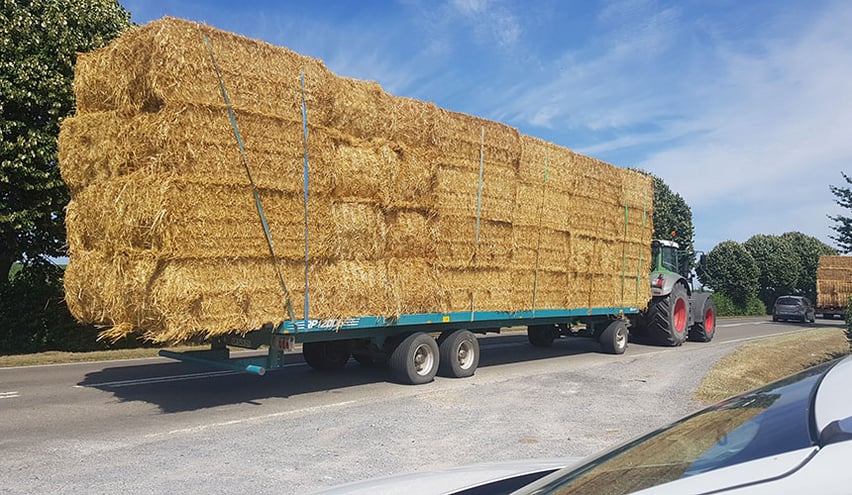
Solutions for reducing rolling resistance on the road
To rectify these different problems, it is important to adapt tyre pressure to the tractor’s specific road use. The temperature of the rubber rises with speed during intensive driving by road, making it more sensitive to wear. A high inflation pressure minimises the tyre’s contact patch with the abrasive asphalt, thus reducing rolling resistance and slowing down the rate of wear.
In addition, a regular inspection of the geometry of the tractor and trailers is advisable to avoid increasing rolling resistance. This check-up is essential in extending the wear life of your tyres while improving the stability, handling and safety of your tractor during intensive road use.
Lastly, using the right equipment to ensure the connection between the tractor and its implement or its trailer helps to reduce rolling resistance. The use of a “Scharmuller” hitch will get rid of any downward pitching effect, or a hydraulic cylinder will eliminate any front/rear jolts during braking, which are highly detrimental for your tyres.
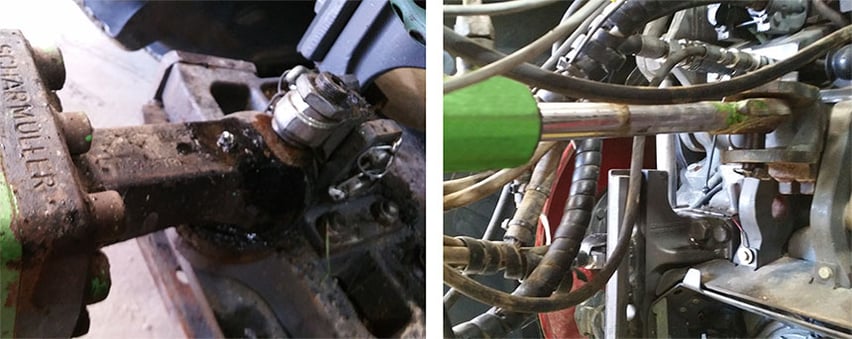
2. What is rolling resistance in the fields?
Tyre rolling resistance in the fields is principally influenced by two factors: incorrect inflation pressure (too much pressure) or incorrect load distribution (too much load on one axle).
In short, when the pressure in the tyres is too high or the load is not spread evenly, the tyres will sink into the ground if the soil is soft or wet, giving it a greater obstacle to overcome. It’s this effort that the tyre has to produce to move forward which constitutes the rolling resistance. It is accompanied by numerous negative consequences:
Increase in slip ratio
The combination of too heavy a load, overinflated tyres and wet ground is ideal for increasing the slip ratio. When the tyres meet excessive rolling resistance, this can lead to excessive slipping or even getting stuck in the mud. This limits the tractor’s traction capacity, leading to a real loss in productivity.
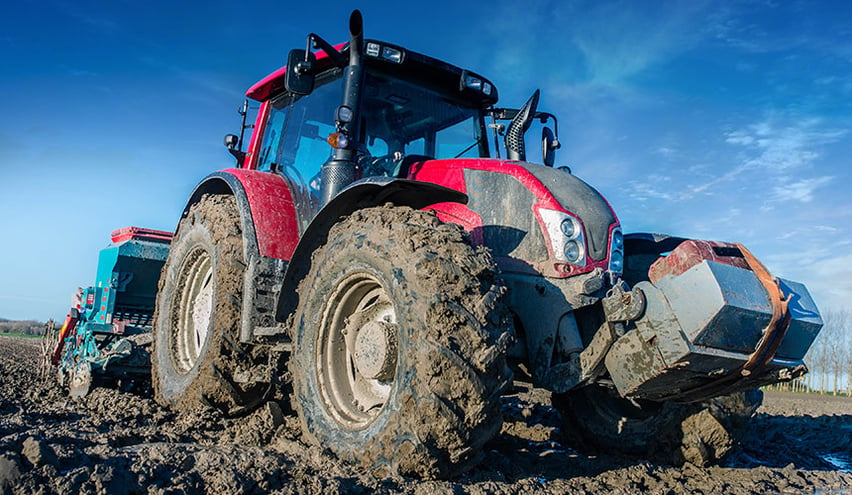
Extra fuel consumption
This occurs when rolling resistance in agricultural tyres is too high. When the tyres lose their grip or sink into the ground due to an incorrect inflation pressure or other factors, this increases the engine power and rpm required to move the combination vehicle forward. Consequence: increased fuel consumption. This extra fuel bill will have a significant financial impact for the farmer and contribute to higher operating costs.
Loss of time
This unfortunate situation occurs when the tyres encounter problems with traction or grip, generally leading to a loss of work efficiency. If the tyres cannot grip onto the ground correctly, your tractor will take much longer to complete work in the field. This results in a decrease in overall productivity on your farm, because the work takes longer than expected.
Soil degradation
This occurs when the tyres exert too much pressure on the ground, damaging the upper layers of soil. This deterioration can be particularly problematic in wet conditions, when the soil is more vulnerable to slip. When the inflation pressure is too high, the tyres seal over and compact the soil, reducing its porosity and its capacity to absorb water. The result is a progressive decline in soil fertility which affects crop growth.
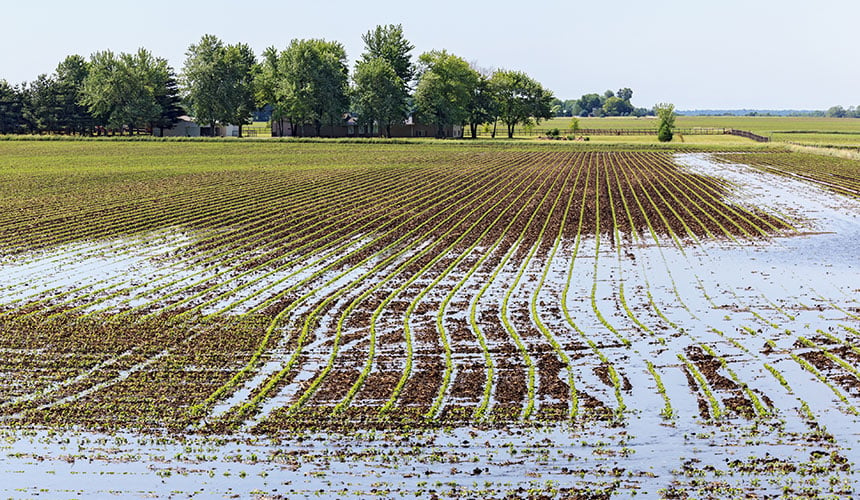
What are the solutions for countering rolling resistance in the fields?
How can you deal with these problems? Simply by reducing the pressure in the tyres to increase their contact patch with the ground. By adjusting inflation pressure based on the type of soil, the load transported and the work to be done, it is possible to reduce rolling resistance in the fields efficiently and thus optimise tractor performance and protect your soil.
3. Impact of rolling resistance during handling operations
Handling operations in mixed crop-livestock farming activities require specially adapted agricultural tyres that are capable of coping with the varied and often intense demands placed on them. Whether for tractors equipped with front fork lifts or loaders or more specialist equipment such as telehandlers, rolling resistance is a decisive factor in tyre wear.
What kind of strain do the tyres face during handling operations?
On-the-spot manoeuvres at low speed place considerable strain on the tyres. Each movement and each rotation of the wheel involves rolling resistance at the level of the ground and twisting of the lugs on the tread. The more these constraints are repeated, the more they can cause:
- Rapid wear to the rubber
- Premature deterioration of the tread
- Internal breaks in the casing
- Tearing off of the lugs.
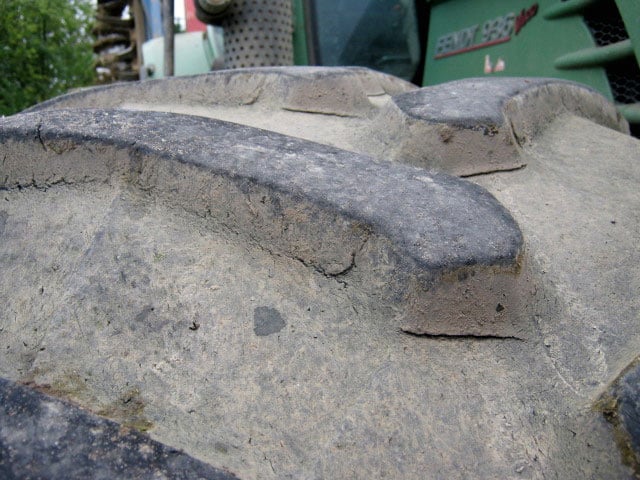
Lugs torn off due to the strain of handling operations
Solutions for handling operations
To cope with these challenges, you must take a proactive approach in terms of tyre pressure. The best solution is to maintain high pressure in the front tyres to improve resistance to cyclic loads and give them more rigidity to cope with manoeuvres. You will be able to minimise the risk of the tyres becoming excessively misshapen and structural damage occurring during handling operations.
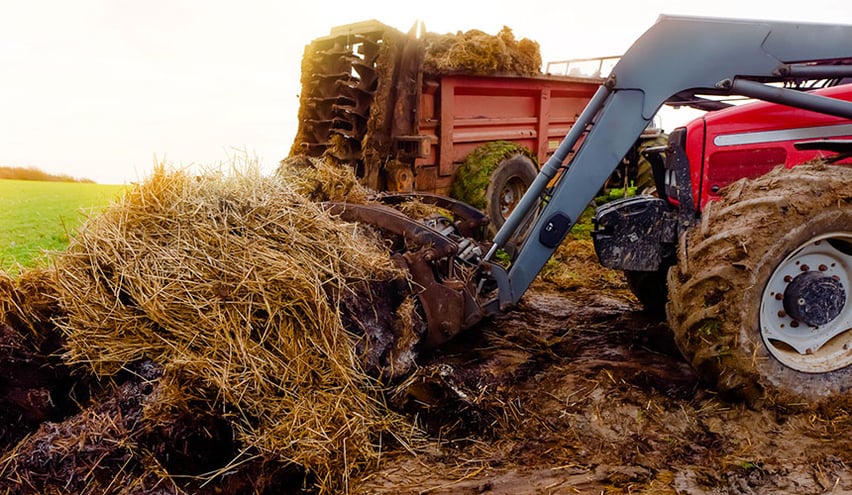
Another way of preserving your tyres during work in the farm courtyard is to make sure that you comply with the recommended load transfer for each type of tyre. This approach ensures optimal stability and reduces the strain placed on the tyres, thus extending their durability.
Combining these different practices will help you reduce rolling resistance and maximise the productivity of your agricultural vehicles.
By adjusting your tyre pressure properly, you can optimise agricultural vehicle performance and improve profitability. Maintaining the right pressure based on the type of ground or the work to be done effectively allows you to reduce rolling resistance and therefore avoid premature wear to your tyres, extra fuel consumption, an increase in slip and as such to minimise the impact of your machines on soil quality in order to protect future yields.
The Bridgestone-agriculture.eu blog is written and administered by tractor tyre experts who are available to provide you with the advice you need on the subject of your agricultural tyres. They allow you to maximise your productivity with information on all subjects linked to tyres: Cheap tractor tyres — Technical data for agricultural tyres — Air pressure advice — Solutions to avoid soil compaction — Sprayer tyre pressure — Why and how to ballast your tractor tyres — When to use dual wheels — The mechanical causes of abnormal wear — Cheap agricultural tyres – etc.
To learn more and boost your farm's profits, Bridgestone-Agriculture is offering you a free, detailed white paper that explains the essential role your agricultural tyres play in your productivity.
Most people who read this article have also read some of the following articles:
- 5 essential techniques to optimise your agricultural tyres
- Do you really use the full capacity of your VF agricultural tyres?
- Agricultural tyres: rules for managing the lead ratio
- Managing the load transfer to the front tyres in polycropping
- What are the signs of an incorrect lead ratio?
- Impact of the dynamic rolling circumference of agricultural tyres
- What is the impact of the section width of your agricultural tyres
- Do my tractor tyres have a wide enough footprint?
- Can my agricultural tyres help reduce my fuel consumption?
- Does improper lead invalidate your agricultural tyre warranty?
This information is intended only to make you aware of the technical and functional aspects of agricultural tires and their use. It does not allow you to make a judgment or a definitive conclusion on a given problem. Only your agricultural tire expert is able to make a technical assessment and take a final decision, case by case.
Leave a
commentary
Your email address will not be published.
Required fields are indicated with *


